home » CERTIFICATES
Dedicated to environmental conservation and the sustainable use of wildlife.
UNDERSECRETARY OF ENVIRONMENTAL POLICY AND ENVIRONMENTAL RESOURCES
GENERAL DIRECTORATE OF WILDLIFE
OFFICE N°SPARN/DGVS/13969/24
MEXICO CITY, NOVEMBER 20, 2024

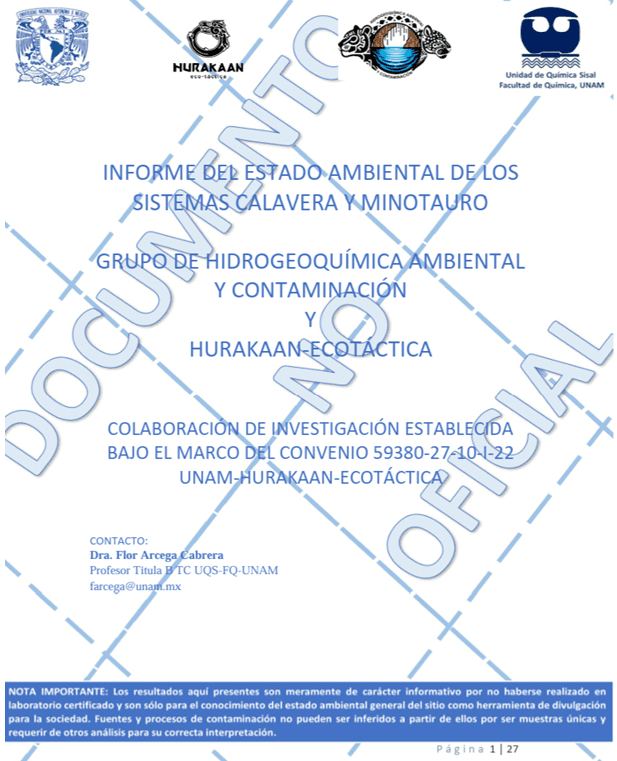
SUMMARY/RESULTS OF UNAM SISAL – HET AC RESEARCH
Environmental Status Report for the Calavera and Minotaur Systems
In 2021 and 2022, expeditions were carried out in the Calavera and Minotruo cave systems in the municipality of Tulum, Q Roo, to carry out the project “Report on the Environmental Status of the Calavera and Minotauro Systems” by the Environmental Hydrogeochemistry and Pollution Group and Hurakaan Eco-Táctica (HET), a research collaboration established under the framework of agreement 59380-27-10-I-22 UNAM-HURAKAAN-ECOTÁCTICA, in which researchers from the UNAM Sisal Chemistry Unit and volunteer cave divers from HET participated. The objective of this research was to identify the instantaneous environmental state of the Calavera and Minotauro systems by determining chemical and physicochemical variables of the site and comparing them with NOM-127-SSA1-2021 for water for human use and consumption and with international values (Buchman, 2008) that may indicate probable damage to the early stages of the biota.
The results obtained were: "In both systems, reducing conditions were found that may be generating a denitrification process of the total nitrogen present, which could explain the low nitrate concentrations. However, it is not possible to confirm this unequivocally, since further studies are required that analyze, for example, N isotopes to identify the input of this element related to septic tanks or agroindustry. Similarly, the presence of anthropogenic wastewater can be corroborated by measuring caffeine or fecal sterols, which function as tracers.
Regarding metals, in the Calavera system, most of them exceed the NOM-127 standard, especially in the northeast sector, which is closer (and even embedded in some areas) to the urban area. This could indicate the entry of anthropogenic wastewater into the area, given the lack of sanitation. In the case of the Minotauro system, the concentrations were too low to pose a risk.
The Calavera cenote system in the monitored sector generally shows an environmental situation that must be addressed, given that there are four metals (potentially toxic elements) that, like ammonia nitrogen, exceed the Mexican regulatory value, so it is recommended to carry out a robust spatial and temporal study to determine the spatiotemporal variation of said environmental condition.
In the case of the Minotauro system, the concentrations of potentially toxic metals and nutrients do not pose a risk, probably as a result of the karst system flows (further research is required in this regard) in the area, and of the good practices established on-site for water quality conservation. However, at least annual monitoring is recommended to identify if these favorable conditions vary. For both cenote systems, it is recommended to use analyses that identify the presence of anthropogenic wastewater, such as nitrogen isotopes, caffeine, and/or fecal sterols.
Likewise, it is recommended that society and authorities emphasize the urgent need for an efficient sanitation system, given the high vulnerability to contamination in the area. (Arcega-Cabrera, 2022)
Environmental Status Report for Tulum National Park
In 2023, a research project was carried out in Tulum National Park in the municipality of Tulum, Q Roo, the project entitled “Environmental Status Report of Tulum National Park” by the Environmental Hydrogeochemistry and Pollution Group and Hurakaan Eco-Táctica (HET), a research collaboration established under the framework of agreement 59380-27-10-I-22 UNAM-HURAKAAN-ECOTÁCTICA, in which researchers from the Sisal Chemistry Unit of UNAM and volunteer divers from HET participated. The objective of the research was “to establish a baseline for the water quality of the
The study will assess the site's chemical and physicochemical variables and compare them with international values that may indicate potential damage to the early stages of the biota and the coral reef. This research also seeks to identify regions of Tulum National Park influenced by continental (ground) water that potentially carries contaminants, and to preliminarily evaluate the transport of this water in the reef lagoon.
The results obtained were: "In general, the water quality on the coasts of Tulum National Park is environmentally positive, since it has good levels of oxygenation (59.5 ± 9.2 O2% and DO of 3.8 ± 0.6 mg L-1), it does not present hypoxia. The salinity is 38.1 ± 5.8 ppt which is in the range reported for seawater (35-38 ppt), however, it has sites with salinity greater than 40 which could be indicating hypersalinity, this is mainly due to the fact that during the dry season the water flow decreases and the evapotranspiration process increases concentrating the salts, in addition to the fact that the sampled sites are very shallow. A pH of 7.9 ± 0.2 was recorded, which is lower than the record in the GoM (8.2), however, it cannot be said that there is a marine acidification phenomenon because In coastal waters there is a mixture of mass
fresh water, rich in CO2, with sea water, which tends to lower the pH.
Regarding nutrients, only specific sites were found where concentrations were higher, and only during one season. However, due to their proximity to the coast, these sites are of concern. Enterococci were found in moderate concentrations, and although they do not yet pose a toxicological risk, their presence is indicative of fecal matter and anthropogenic wastewater.
This study is recommended to continue over time to establish natural variation and elucidate anomalies related to anthropogenic activities or the entry of wastewater into the site.
It is important to note that the positive environmental status referred to in this report may be related to the implementation of good practices in the use of drinking water, wastewater disposal, and waste management that the hotel sector, cooperatives, and social sectors have begun to implement since 2022. However, further studies are required to confirm this. (Arcega-Cabrera, 2023)



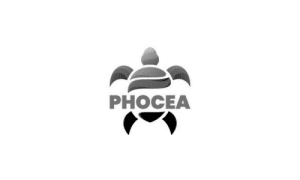






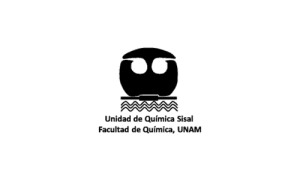

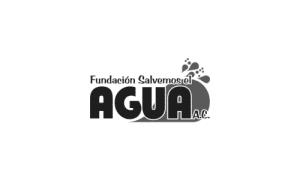











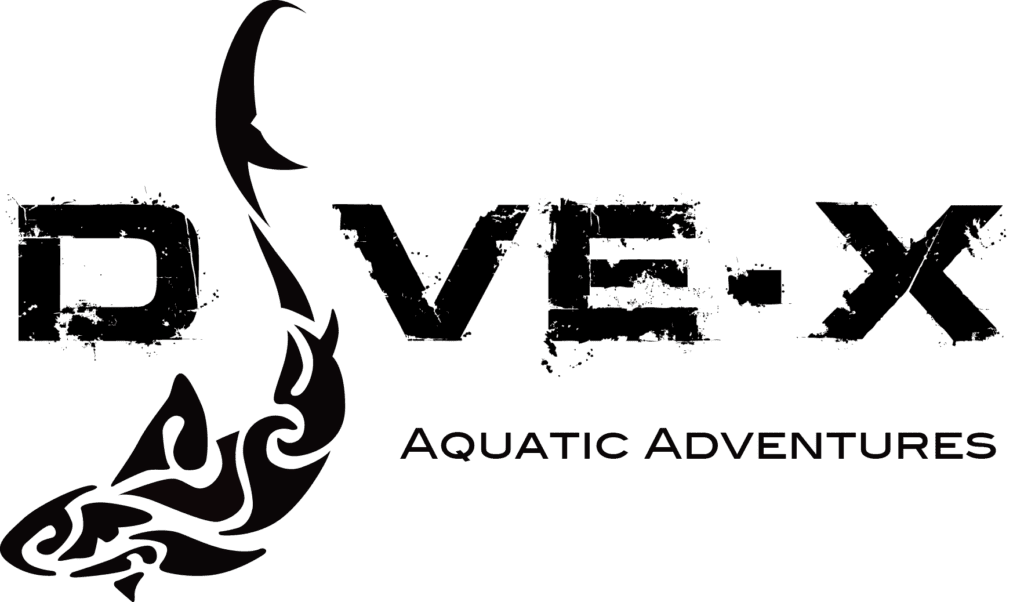
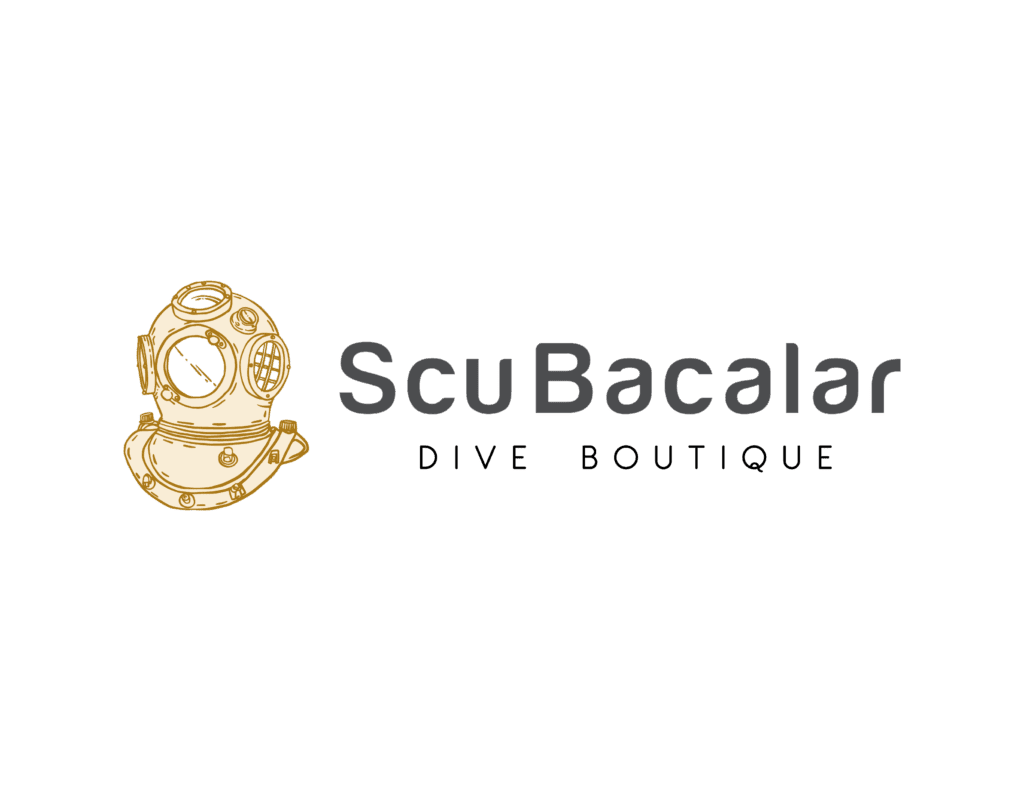


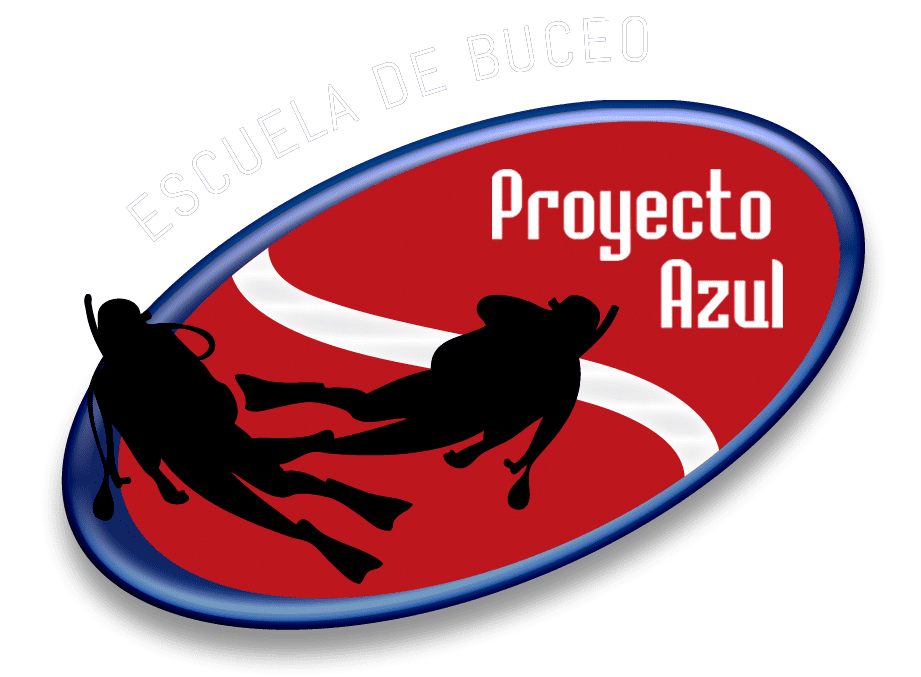








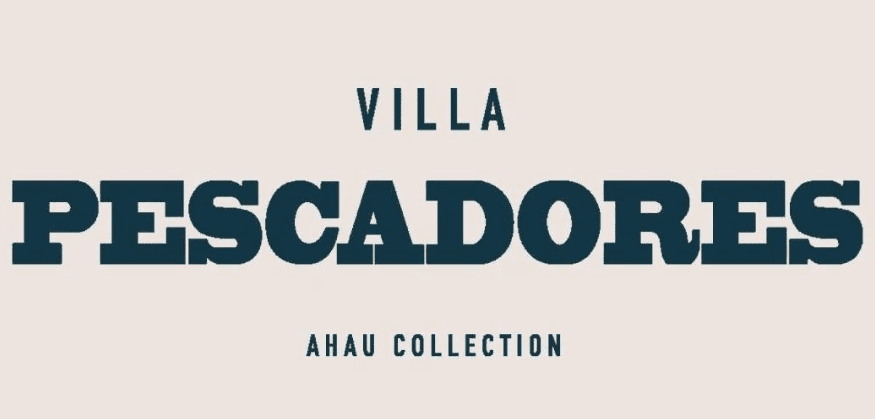



Hospedaje donado por NEUBOX INTERNET